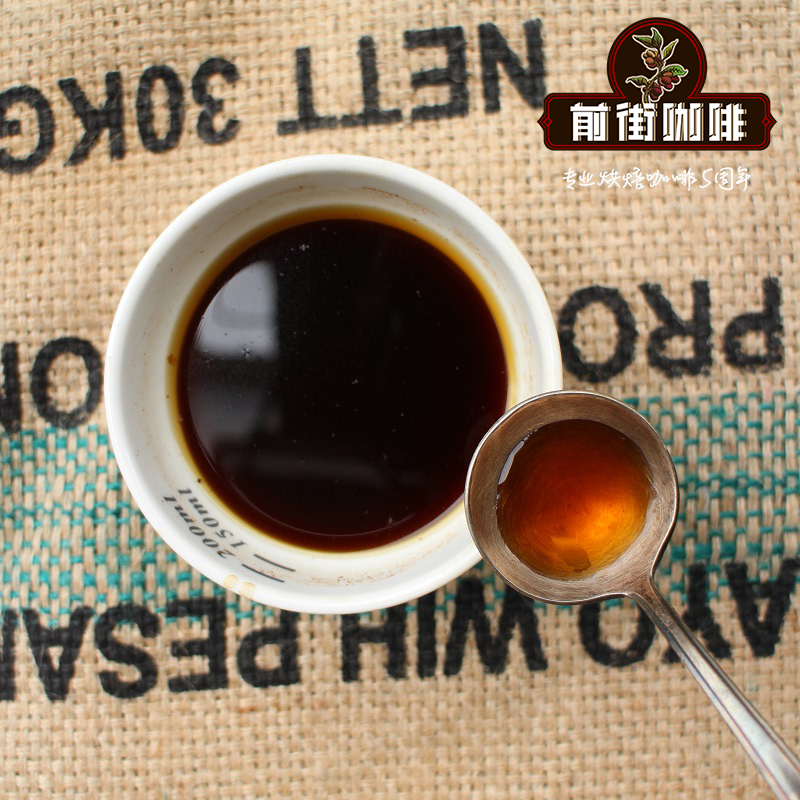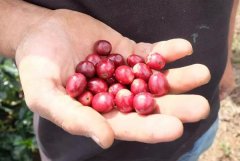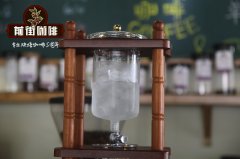Suggestions on tanning and brewing of all-red fruits in Louise Manor, Brazil _ introduction of coffee varieties in Louise Manor, Brazil

Professional coffee knowledge exchange more coffee bean information please follow the coffee workshop (Wechat official account cafe_style)
Speaking of Brazilian coffee, you may hear a lot of voices. Many people think that Brazilian coffee is of mediocre quality and can only be used as part of mixed beans. Some people think that Brazilian coffee has moderate acidity and is very suitable for public taste.
Friends who have done research on Brazilian coffee can also leave messages in the background and have in-depth communication with the editor. Next, the editor will pick up the little things about Brazilian coffee. Please judge for yourself whether it is a clear flow or a mudslide in the coffee industry.
Status
First of all, let's weigh the weight of Brazilian coffee in the world.
As the world's largest producer, Brazil has been described as the "giant" and "monarch" of the coffee world.
How big is it? To put it this way, Brazil produces 30% of the world's coffee each year. 35%. There are nearly 4 billion coffee trees in Brazil, and the number of people engaged in the coffee industry in the country is more than twice that of Colombia, the second largest coffee producer in the world.
Producing area
Of Brazil's 27 states, the southern state of Parana has the highest production, accounting for about 50 per cent of national output, while the states of Sao Paulo, Minas Gerais and Espirito Santo combined have 48 per cent.
(red is Robusta, yellow is Arabica)
Harvesting and processing
Brazilian coffee beans are usually harvested around June, starting in the northeastern state of Bahia and ending in the south around October.
The harvest method used is the shaking method, which causes the beans to fall by hitting the coffee tree. In some larger manors, the harvester is used to greatly improve the work efficiency.
The Brazilian harvester is picking coffee.
In the handling of coffee beans, most parts of Brazil are tanned, but the quality varies. It may also come from this that it is thought to be the basis of the debris flow.
To this end, Brazil has introduced an exclusive half-sun style.
The so-called half-sun front part is the same as the water-washing type and the semi-washing type, which is moved into the sink to use buoyancy to remove defective beans. However, it is different from the water-washing type to retain the pectin for fermentation, and it is also different from the half-washing type to remove the pectin for the sun, and the half-sun type to directly expose the beans with pectin to remove moisture.
The reason for this unique way is that Brazil's climate is very dry, pectin beans with simple dehydration, not easy to parasitic mold.
Grading
As the largest coffee producer in the world, Brazil has a large output and many producing areas, so there is not only one classification standard, but it is also very standardized.
The first is the most common sieve grading, with Brazilian beans numbered from 12 to 20.
The second is the grading of defective beans, and it is worth noting that Brazilian beans are generally rated NO.2-NO.8. NO.2 is already the most advanced, and there is almost no NO.1.
There is also a very distinctive cup test, in the following order: Strictly Soft extremely mild, Soft mild, Softish slightly mild, Hard difficult, Rio light iodine flavor, Rioy strong iodine flavor. The special "iodine smell" in the grade is due to the strong iodine flavor peculiar to the local soil when the coffee near Rio de Janeiro is picked.
Representative achievements
Brazil is best known for the port of Santos, the world's largest exporter of coffee.
By "Santos coffee beans", we mean coffee from the port of Santos, which is mainly grown in the valleys around Sao Paulo.
Most of these coffee beans have a pure and smooth taste, high acidity and moderate consistency, with a slight nutty taste, are the most frequently used mixed beans, and the best flavor is known as the strongest coffee.
Port of Santos
Brazilian coffee is famous for its "yellow bourbon" spread in rivers and lakes.
Brazil Blossom Valley Yellow Bourbon is a bourbon Bourbon variety, named for the golden color of its ripe coffee cherries. It has changed the impression of poor quality of Brazilian coffee beans and become the winner of Brazilian boutique coffee cup Cup of Excellence (CoE for short).
Huang Bourbon is located in the Hirado region, one of the three major boutique producing areas in Brazil. It grows in the highland of 1100m / m above sea level, using the method of sun exposure.
The palate is rich in layers, with soft and elegant acidity, with nutty aromas and sweet aromas of cream and chocolate. Unfortunately, annual output accounts for less than 1%.
[hand rush Louise Manor reference]
Louise Manor, Brazil. 15g powder, medium grinding (small Fuji ghost tooth cutter 4 grinding)
V60 filter cup, 88-89 degrees water temperature, 30g water injection for the first time, steaming for 27 seconds
Cut off the water when injected to 105g, wait for the water in the powder bed to drop to half, then inject water slowly until 225g, not at the end, the ratio of water to powder is 1:15, and the extraction time is 2:00.
[flavor] Sweet, clean and half-sunny beans will brighten her acidity but match the sweetness, and some of them even have tropical fruit aromas, especially the overflowing aroma of cooking. Sugar cane juice's sweet, black tea, beautiful and smooth fruit sweetness, obvious nutty flavor, balanced and supple acidity, weak and clean bitterness, rich chocolate aroma and nutty flavor, bright and refreshing taste, smooth and delicate taste.
Use this coffee from [Louise Manor] in Brazil to make a cup of iced coffee, called 15g powder, small Fuji grind 3, brew it in 88 degrees hot water, put 100 grams of ice in the sharing pot, steam 30 grams of water for 30 seconds, stir slightly during steaming, pour water to 150 after steaming, taste smooth, chocolate nut flavor is outstanding, sweet, very suitable for a cup in this weather.
END
Important Notice :
前街咖啡 FrontStreet Coffee has moved to new addredd:
FrontStreet Coffee Address: 315,Donghua East Road,GuangZhou
Tel:020 38364473
- Prev

Lim producing area of Ethiopia | Keshagsi Farm-Wind from the sun treatment of native species in Teana
Professional coffee knowledge exchange more coffee bean information please follow Coffee Workshop (Wechat official account cafe_style) Lim production area of Ethiopia | Kesakesi Farm-what is the flavor of Teana native species sun treatment? Sounds of nature this bean is different from the familiar Yegashifi and Sidamo, and the producing area of Limu (Lim) is only in recent years.
- Next

Lim producing area | Lima Lemma Nicholas NegusieG3 | Heirloom solarization local native species wind
Professional coffee knowledge exchange more coffee bean information please follow the coffee workshop (Wechat official account cafe_style) Ethiopia Lim production area | Nicholas G3 | Heirloom sun local native flavor? Crops produced in Ethiopia in 2008, including wheat, corn, sesame and coffee, were fully introduced into E.C.X 's trading system (Ethiopian Commodity Exch
Related
- Detailed explanation of Jadeite planting Land in Panamanian Jadeite Manor introduction to the grading system of Jadeite competitive bidding, Red bid, Green bid and Rose Summer
- Story of Coffee planting in Brenka region of Costa Rica Stonehenge Manor anaerobic heavy honey treatment of flavor mouth
- What's on the barrel of Blue Mountain Coffee beans?
- Can American coffee also pull flowers? How to use hot American style to pull out a good-looking pattern?
- Can you make a cold extract with coffee beans? What is the right proportion for cold-extracted coffee formula?
- Indonesian PWN Gold Mandrine Coffee Origin Features Flavor How to Chong? Mandolin coffee is American.
- A brief introduction to the flavor characteristics of Brazilian yellow bourbon coffee beans
- What is the effect of different water quality on the flavor of cold-extracted coffee? What kind of water is best for brewing coffee?
- Why do you think of Rose Summer whenever you mention Panamanian coffee?
- Introduction to the characteristics of authentic blue mountain coffee bean producing areas? What is the CIB Coffee Authority in Jamaica?

